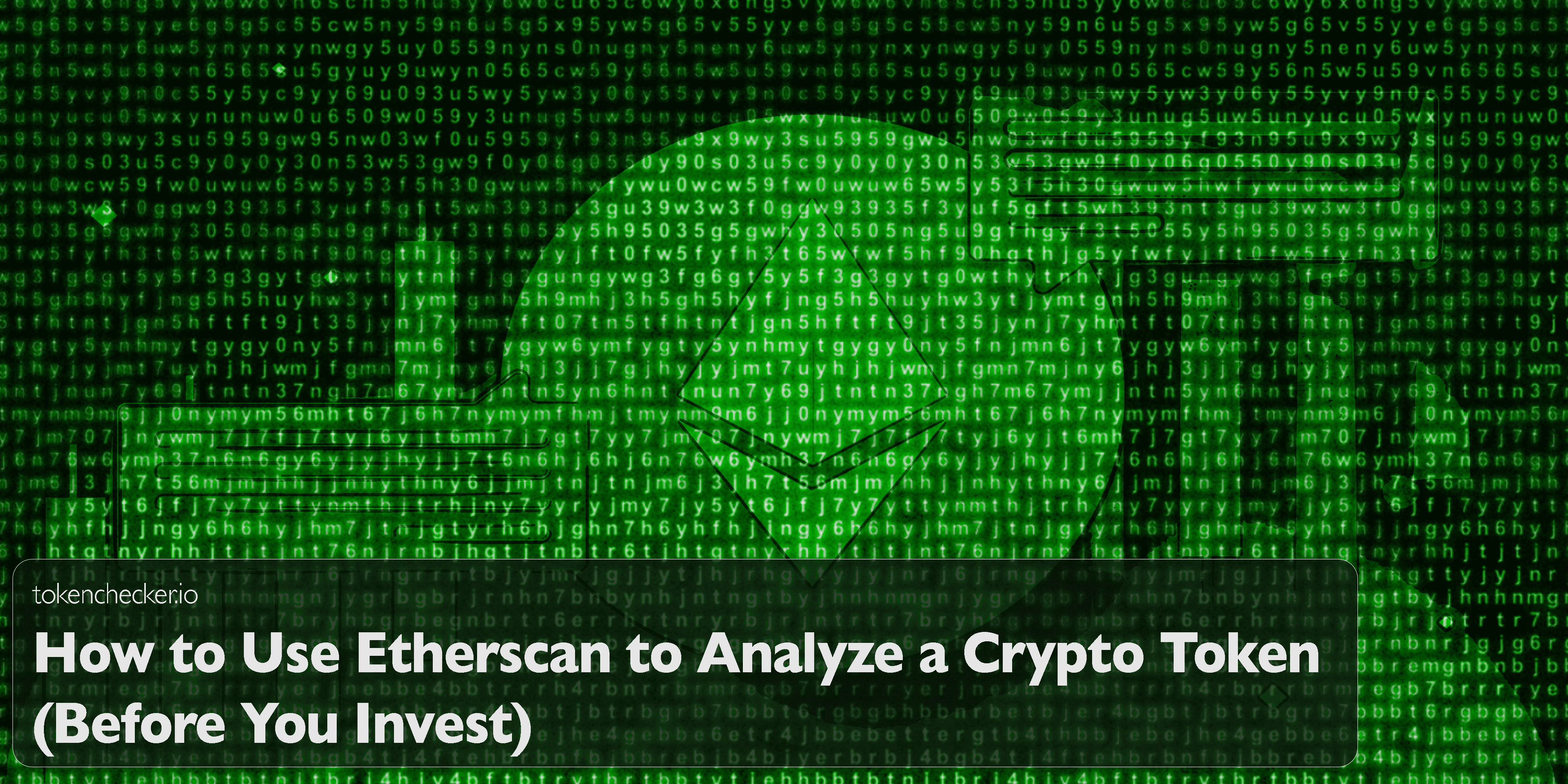
How to Use Etherscan to Analyze a Crypto Token (Before You Invest)
Introduction
Every token has a story and most of it is hiding in plain sight. You just have to know where to look.
Etherscan isn’t just for checking gas fees or watching whale wallets. It’s a full-blown research tool. The kind of tool that lets you spot rugs before they happen, sniff out honeypots, or figure out if a project is legit… or just good at pretending.
Most people barely scratch the surface. So here’s a breakdown of how to actually use Etherscan to analyze a token and why it should be the first place you check before buying anything on Ethereum.
Step One: Find the Right Contract
Start with the token’s official website, Twitter, or launch announcement. Look for the contract address it’s a 42-character string starting with 0x.
Once you’ve got it, paste it into etherscan.io and land on the Token Tracker page. From there, the real digging begins.
Check the Basics (Right at the Top)
On the main token page, Etherscan shows:
- Token name and symbol
- Total supply
- Decimals (usually 18, but check)
- Holders (number of wallets holding the token)
- Transfers (total number of token movements)
What you’re looking for here is consistency. If the token claims to have a fixed supply but you see it increasing… that’s a red flag. If there are only 3 holders, you’re probably looking at a dev wallet setup.
Use the “Holders” Tab to Spot Whales and Scams
Click on Holders to see the distribution of tokens across wallets. This is where a lot of scams reveal themselves. You can learn more about how to do a deep dive in our article on analyzing token holders.
Watch out for:
- One wallet holding 90%+ of supply = instant red flag
- Top 10 wallets holding over 80% = bad distribution
- “Contract” or “Dead” wallets holding huge supply = check if it's liquidity-locked or burned
Also check if the token contract owns a large chunk. That could mean it's a honeypot, or the dev still has too much control.
tokenchecker.io pulls this info too but Etherscan lets you trace every wallet and see when they moved, bought, or dumped.
Look at Recent Transactions (Behavior = Truth)
Go to the Transfers tab and scan recent activity. You’re checking for:
- Bot-like patterns (hundreds of micro-transfers)
- Whale dump spikes
- No outbound transfers = could be a honeypot
- Fake volume via back-and-forth swaps
If all transactions are buys and zero sells, ask why. Might be that no one can sell or no one dares.
Check the Smart Contract (This Is Where the Traps Are)
Click the Contract tab. This is where the code lives. If it’s not verified? That’s a problem. For a non-technical guide, check out how to read a smart contract without coding skills.
Here’s what to look for:
- Is the contract verified? (It’ll say “Contract Source Code Verified”)
- Can you read functions like transfer, mint, setTax, renounceOwnership?
- Is there an owner or admin role still active?
- Are tax or liquidity functions editable?
If you see functions like mint() or setFees() still enabled and no ownership renouncement? The dev can change things anytime. You’re at their mercy.
Use the “Read” and “Write” Tabs for Contract Behavior
In the Read Contract tab, you can fetch live data like current fees, owner status, or trading limits. In Write Contract, you can interact with functions if they’re public or open.
You're not executing anything here unless you're connected to MetaMask, so don’t worry you can’t break anything just by reading.
Use this section to:
- Confirm trading is enabled
- See if fees can be changed
- Check if anti-bot logic exists
- Detect if blacklist/whitelist functions are present
tokenchecker.io scans these too, but learning to check them yourself gives you a major edge.
Don’t Skip the Events & Internal Tx Tabs
This part is often missed.
- Events: These show things like token burns, airdrops, liquidity additions, and contract interactions
- Internal Txns: Sometimes devs use internal transactions to move funds quietly or trigger contracts from within
When you’re tracking rugs, watching burn events or stealth contract calls can help you piece together what went wrong or spot it before it happens.
Extra Tips: Use tokenchecker.io to Validate Everything
While Etherscan is the raw data layer, tokenchecker.io connects the dots. It pulls from Etherscan and overlays it with red flag detection:
- Honeypot checks
- Mintable contracts
- Creator wallet analysis
- Liquidity lock status
- Tax and sniper detection
Etherscan tells you what’s happening. tokenchecker.io tells you what it means.
Use both.
Final Thoughts
If you’re trading or investing in tokens and not using Etherscan you’re flying blind. This isn’t just a block explorer. It’s your due diligence machine.
You don’t need to be a dev. You just need to know where to click, what to read, and what patterns raise alarms. And if you’re short on time? Let tokenchecker.io run the scan for you.
Because good tokens hold up under scrutiny and bad ones hope you don’t check.